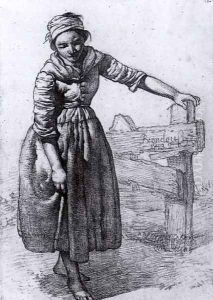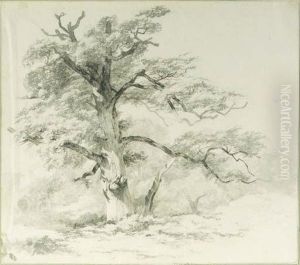Albertus Brondgeest Paintings
Albertus Brondgeest was a Dutch artist known for his landscape paintings, particularly those depicting scenes of his native country, the Netherlands. Born on August 2, 1786, in Amsterdam, he was exposed to the rich artistic tradition of the Dutch Golden Age, which had a lasting influence on his work.
Brondgeest's artistic journey began at a young age under the tutelage of Dutch landscape painter George Jan Hendrik Pape. Brondgeest developed a keen interest in capturing the serene and pastoral landscapes of Holland, often portraying the flat countryside with its waterways, windmills, and rustic buildings. His style was characterized by a fine attention to detail and a harmonious use of color, which helped to convey the tranquil beauty of the Dutch scenery.
During his career, Brondgeest achieved moderate success and was appreciated for his contribution to the Dutch landscape genre. He participated in various exhibitions and his works were collected by art enthusiasts in the Netherlands and beyond. Despite not being as widely known as some of his contemporaries, his paintings were praised for their authenticity and the sense of calm they evoked.
Albertus Brondgeest continued to paint throughout his life, capturing the changing moods of the Dutch countryside across different seasons. He remained active in the art community until his death on May 29, 1849, in Amsterdam. Today, Brondgeest's works are held in private collections and are occasionally displayed in museums, offering a glimpse into the idyllic rural life of 19th-century Holland.








